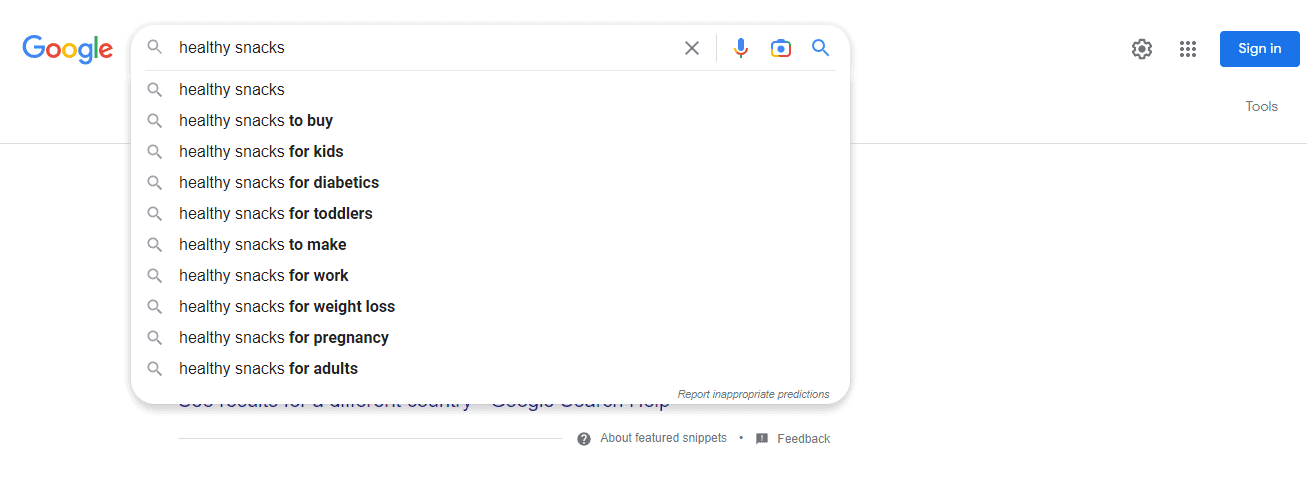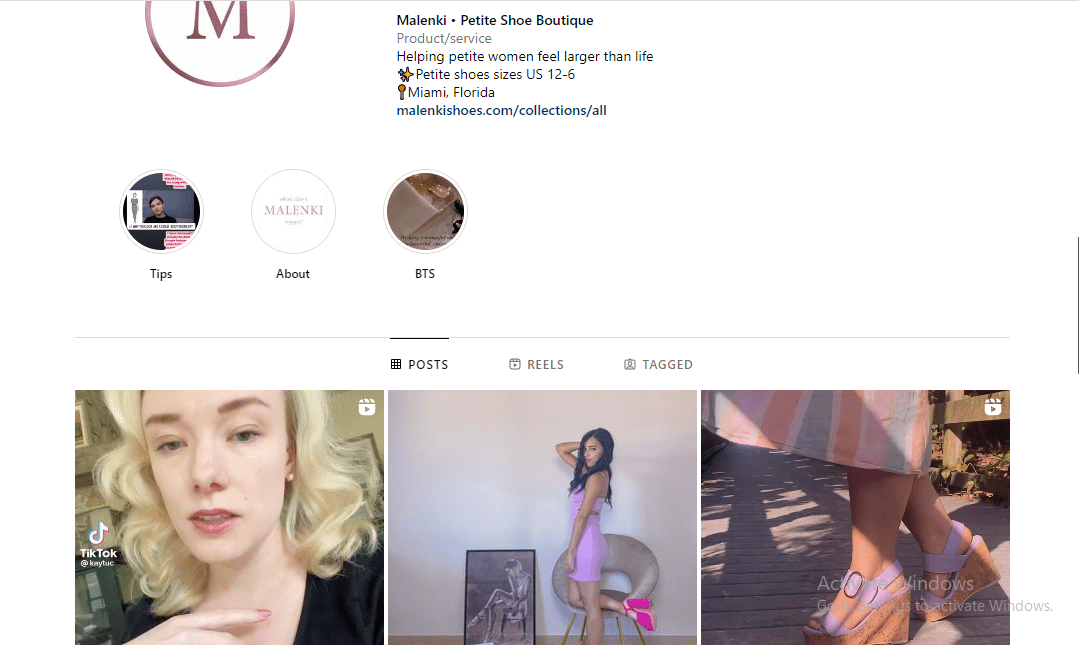Before introducing any product to the market, the first and foremost important thing is to figure out what will set you apart from other competing businesses and the potential customers who will be interested in buying from you.
If you just jump into the market without a strategy, it’s possible that you will be targeting customers that may have been cornered already by established players in your industry.
Yet, identifying where you excel, and prospective customers that will be drawn to what you are offering is easier said than done.
So, how do you position yourself for success in your industry?
The answer is to identify an untapped niche in your target market and then master it by exceeding the expectations of your customers.
In this article, I will show you how to develop a niche strategy and highlight companies that have successfully taken a similar approach.
What Is A Niche Strategy?
A niche strategy is a business decision to design and build your product or services for a specific portion of your target market.
You will be targeting this segment of your market’s demographic because they have needs and preferences that are not being met by the available options in your industry.
For example, the sportswear industry has been dominated by Nike and Addidas for decades, yet Under Armour was able to carve a niche for itself by focusing on selling moisture-wicking sports apparel that can stay dry after absorbing sweat.
The company’s founder was an NFL football player, and the product was an instant hit among his colleagues. Under Armour has since grown into a multibillion-dollar brand with its own loyal base of customers.
Why Is A Niche Strategy Important?
The barriers to entry when it comes to creating a new business are not that high. Anyone with an idea and some capital can start a new venture or online business.
That means whichever idea you are thinking of right now, there are more than a few individuals out there that are thinking of doing the same thing.
To succeed, you must focus on mastering one corner of your target market and distinguishing your business from your competitors.
Niche marketing will help you deliver the right message that will resonate with your ideal customers, and you will be able to carve out a unique identity in your industry.
How A Niche Strategy Is Different From Other Strategies
There are two main business marketing strategies; niche marketing and mass marketing.
While a niche marketing strategy focuses on a specific demographic within the target market, a mass marketing strategy targets the entire customer base for that industry.
Both approaches have different goals. Niche marketing aims to dominate a segment of the market in other to establish a loyal base of customers and maximize profits.
With a mass market strategy, the goal is to reach the highest number of potential customers possible so as to make the highest volume of sales possible. Such businesses usually sell necessities that appeal to all customers irrespective of their demographic.
For example, a national, low-cost airline like JetBlue serves as many people as possible, while a luxury private jet charter company like ExecuJet markets its services exclusively to high-net-worth individuals that can afford charter flights.
How To Create A Niche Marketing Strategy
Here are the steps you must take to successfully develop the unique value proposition that will help distinguish your brand from others in your industry.
Step 1: Establish Your Niche
The goal at this stage is quite simple; study your target market to find a pain point that has not been addressed by existing products and services or inadequate solutions that are currently catering to that.
Get to know your customers intimately, are there prospective customers that want something more affordable, a more premium product, something that is manufactured using sustainable materials, or a comprehensive solutions package that solves multiple related problems?
To discover their pressing challenges, go online and browse through social media platforms to see what they are talking about. Check out customer Facebook groups and online chat forums that are related to your industry.
Google Search is another excellent tool that you can use for your research. Type in relevant keywords, then note down the additional keyword suggestions in the search bar’s drop-down list.
Keyword research will show you what people in your target market are searching for, and you should be able to identify needs that are currently unmet by existing solutions.
For example, if you type “healthy snacks” into the Google Search bar, you will get results like; “healthy snacks for pregnant women,” “healthy snacks for diabetes,” “healthy snacks for toddlers,” and “healthy snacks for weight loss.”

Let’s say the market for snacks is currently dominated by businesses offering sweet snacks; you can then develop and sell a niche product that is sugar-free and marketed to that segment of customers searching for healthy snacks for diabetes.
You can use any of the following factors to shape your unique marketing pitch:
- Geographics: you can opt to focus on people in a specific town, state, region, or even a country (Horizon Air regional airline)
- Demographics: with this approach, you will design a product to meet the needs of individuals of a specific age, gender, education, or income level (Girlfriend Collective—activewear brand for women)
- Psychographics: you will focus your product on addressing the unique values or interests of a specific group of people in your industry (Tesla for eco-conscious drivers)
- Price: with this approach, your product will be designed for customers that are comfortable with a specific price point. It could be free with paid add-ons, budget-priced, or premium. (Louis Vuitton luxury goods for wealthy customers)
- Innovation: your product will be designed and built to vastly exceed the quality and capabilities of existing solutions (the original iPhone which changed the mobile phone market)
Step 2: Evaluate The Feasibility Of The Idea
At this stage, you would have selected a niche that you want to target, but before you go further in the process, you must first determine whether there is a large enough market to support your business.
There is no point in dominating a segment of your market if it’s too small for you to achieve profitability. The market must also be large enough for you to grow sales and revenues over time.
You can use SEO tools like Semrush or SimilarWeb to get the search volume for the keywords that inspired your idea. Compare those volumes to that of other representative keywords for existing products in your industry that do sustainable business.
Another thing you must check is whether your niche audience is even interested in your novel idea. The product or service you are pitching must not only appeal to your target audience, it must also solve a problem or satisfy a need.
If it doesn’t offer any unique benefit that customers will be willing to pay for, the new product may flame out, and you would have wasted time and resources.
A customer survey will help you hear from the horse’s mouth whether or not customers have a good reason to buy your new product.
Step 3: Understand Your Target Audience’s Problems And Solve Them
Once you have confirmed that your niche idea is viable, it’s time to build a holistic picture of your target customer.
What you have done up to this point has proved that customers exist for an untapped segment of your industry, but you still don’t know much about those customers. This step is all about connecting with your potential customers on a deeper level to understand their demographics and the features they want from your product or service.
The best way to do this is to develop a buyer persona. It is a profile of your potential customer showing their age, gender, profession, income, interests, favorite social platforms, hobbies, and other information.
The information you get will help you design a product that best addresses the needs of your customer. It will also help with brand messaging.
You would have gained a deep understanding of what resonates with them, so you will be able to tailor your marketing tactics appropriately without wasting marketing dollars.

For example, Malenki Shoes is a niche brand that sells stylish heels built for petite women. The company’s founder noticed that women with small feet were forced to wear children’s flats or make do with improperly-sized shoes and then set out to meet that need.
Today, the company has a loyal customer base, and it has been particularly successful with influencer marketing.
Step 4: Know The Competition
You must study your competition’s strengths and weaknesses so you can identify what your company can do better to make customers choose your brand over other alternatives.
The more you know about your competitors, the easier it will be for you to carve out a distinct niche strategy.
For example, ThirdLove is the only lingerie company that offers bras in 78 different sizes. To set itself apart from its competitors, the company’s founder decided to focus on body diversity as their niche strategy. They have such a wide range of products that anyone can find the best bra fit and size.
They also built their brand image around body positivity, and that message has resonated with hundreds of thousands of loyal customers.
Competitive analysis is very useful when crafting a marketing strategy. It will help you identify valuable information about your competitors, including:
- The social media platforms they are using to promote their brand,
- The strategies they are using to engage with customers,
- And the keywords they target with their content marketing.
Step 5: Focus On Your Branding
A distinct brand identity will help you attract the right customers to your products. Your market research and competitive analysis data should help you come up with a well-defined brand message.
Market research will show you the core message that will appeal to your target audience, as well as the tone of voice and language you must use to communicate with them.
For example, Octavia Elizabeth, the fine jewelry company, understands that many buyers in its industry are concerned about the environmental impact caused by the mining of the gems used to produce the jewelry.

So, the company built its brand messaging around sustainably-sourced jewelry. Its website and social media profiles showcase the company’s commitment to working with ethical production partners.
That approach has attracted a loyal clientele that is willing to pay a premium for its products.
This example further backs up the importance of having a unique brand identity—it helps you build a customer base of loyal customers. When buyers feel that a company’s principles align with their values, they will keep buying from that company.
Step 6: Choose Where You Will Promote Your Business
When a business is trying to connect with a specific segment of the market, choosing the right platforms to promote the brand is crucial.
Your market research will help with this. It will help you discover the preferred platforms of your target customers, how they search for products online, and the type of content that will grab their attention.
So, if your target audience are baby boomers that spend more time on Facebook, then it makes sense to focus on that platform. And if they are mostly from the Gen Z generation, then your marketing efforts will focus on platforms like TikTok and Instagram.
Step 7: Listen To Your Customers
At this stage, t niche strategy you developed has led to a new product that has attracted the attention of a segment of the market, and you have started building a loyal base of customers.
Your work doesn’t stop there, you must continue to listen to your customers so you can use their feedback to resolve issues and improve your product.
Social listening tools like BrandWatch and Buffer will help you monitor what people are saying about your brand on all the major social platforms.
Niche Strategy Advantages And Disadvantages
Let’s take a minute to now discuss the niche strategy advantages and disadvantages.
Niche Strategy Advantages
- Less Competition: you will have fewer rivals since you will be selling a unique product to a specific audience
- Higher ROI: your marketing budget will deliver more sales for fewer dollars since your efforts are focused on the people that are most likely to buy from your
- Loyalty: when customers get exactly what they want from a brand, they tend to stick with that company for the long term.
Niche Strategy Disadvantages
- Limited room for growth: since you are selling to a small segment of the market, the market potential of your business is limited to that audience
- New Competition: once you prove the viability of a new business idea, other competitors will come along with the intention of stealing your customers and mirroring your success
Frequently Asked Questions

Is Apple A Niche Market?
Apple focuses on selling top-end phones to middle and upper-class buyers that can afford its premium price tags. The niche dominated by the company only accounts for 18% of phone sales and yet makes 74% of profits in the industry.
Is Starbucks A Niche Market?
Starbucks’ niche strategy is to focus on middle to high-income customers that are interested in premium coffee products that they can consume in a peaceful and well-designed space. That strategy has worked well for the company, and it currently has a 37% market share in its industry.
Wrapping Up
A niche strategy helps a brand focus its products and marketing efforts on customers that are most likely to respond to its overtures.
It’s a winning strategy that can work for any type of company, both big and small. It also ensures the efficient use of your marketing resources.
If you have any questions about the best way to implement a niche strategy for your new business, feel free to reach out in the comments section.







